An Introduction to Mid-Century Modern Design in 2025
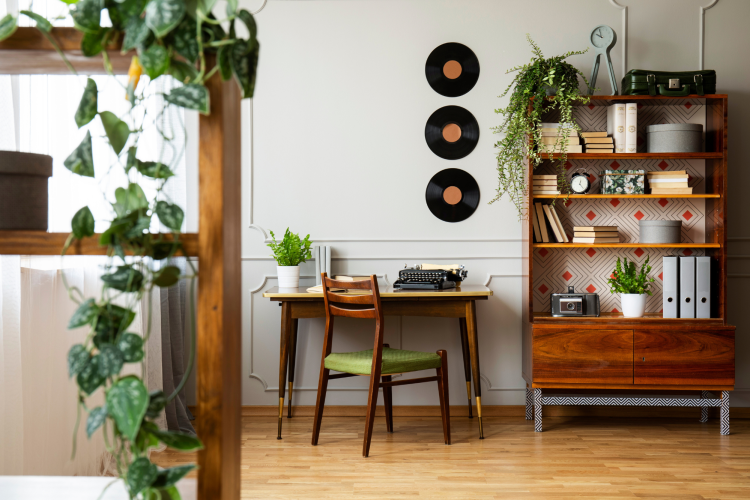
You may have seen the term mid-century modern when looking at furniture or heard it while watching home renovation shows. But what is mid-century modern design exactly? The term refers to a design style that rose to popularity between the 1940s and 1960s.
Though original mid-century pieces are from this era, there has been a resurgence of the style in new furniture and it continues to be popular. It has classic and timeless appeal, according to an interview by Forbes, which is why you’ll find many contemporary furniture pieces and homes that emulate this style.
Mid-century style has touched all parts of the home. Mid-century interior design and mid-century modern architecture have shaped the way homes were designed, from the materials used to the layout of the homes.
Mid-century modern furniture is especially popular since it’s an easy way to bring the style into your home, whether the space is designed in a mid-century aesthetic or not. Read on for an introduction to mid-century style.
Jump to Section
- What Is Mid-Century Modern Design?
- Mid-Century Modern Design Ideas
- The Legacy of Mid-Century Modern Design
- Mid-Century Modern Architecture
- Significant Examples of Mid-Century Modern Design
- Mid-Century Modern FAQs
What Is Mid-Century Modern Design?
The History of Mid-Century Modern Design

Mid-century modern design rose to prominence after World War II. The era was marked by innovation and a revolution in the way people lived. During this time, the middle class was growing and moving to the suburbs.
The homes reflected the need for efficient and functional designs and uncluttered styles that differed from the ornate designs of the previous decades.
In the late 1800s and early 1900s, Victorian and Art Deco styles, respectively, reigned supreme. Ornate designs, excess and richness were trademarks of the time. Mid-century modern was a move away from that style that was also influenced by the shifts in culture and society.
Many people during this time were seeking optimism post-war. This can be seen by the proximity to nature that is popular within the mid-century modern design. This led to people living more casual lifestyles and economic prosperity that prompted the clean mid-century aesthetic.
Architects like Le Corbusier, Charlotte Perriand, Eileen Gray, Frank Lloyd Wright and Rudolph Schindler often built the homes and buildings that defined the style. Designers like Alvar Aalto, Charles and Ray Eames, Florence Knoll and Gio Ponti were famous for making the furniture pieces that adorned these mid-century homes.
So what is mid-century modern design? In essence, it was a look to the future and a new, optimistic way of living. The unfussy, simple and nature-focused design is what made it popular during the mid-century era and a timeless home decor option going forward.
Mid-Century Modern Design Ideas
So, what is considered mid-century modern? There are a few key characteristics of the style used in interior design.
Clean Lines
Clean lines are a defining feature of the style. You’ll often see horizontal and vertical, straight
lines throughout mid-century pieces. Mid-century furniture has an emphasis on straight, square and geometric forms. When people were rebelling from the ornate design of aesthetics past, mid-century clean lines created simplicity and order.
Natural Materials
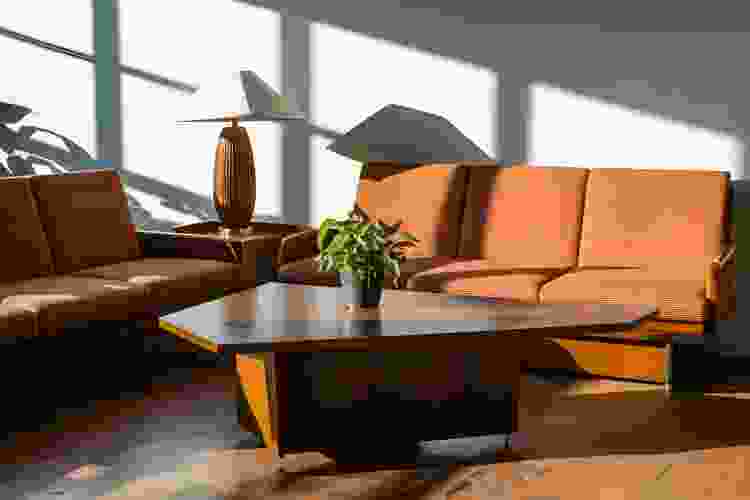
You’ll also often see natural materials in mid-century modern décor and interior design. Wood, glass and stone are used throughout mid-century design. Wood floors and wood paneling on the walls, along with wood furniture, were common. Homes often featured large panes of glass windows or skylights. Real stone was often found on the floors, wall or fireplace features.
A New Approach to Space
Mid-century homes usually had open floor plans where one living space flowed seamlessly into the next. Living rooms and dining rooms would be open to each other with little separation from the kitchen. This was meant to facilitate socialization between family and friends.
Bringing Nature Inside
One of the most well-known mid-century modern design ideas was integrating nature into the design. As mentioned, large windows were popular, especially because they allowed tons of natural light to illuminate the space. Sliding glass doors and skylights were also common. Some homes may have featured glass atriums with trees or plants inside.
The Legacy of Mid-Century Modern Design
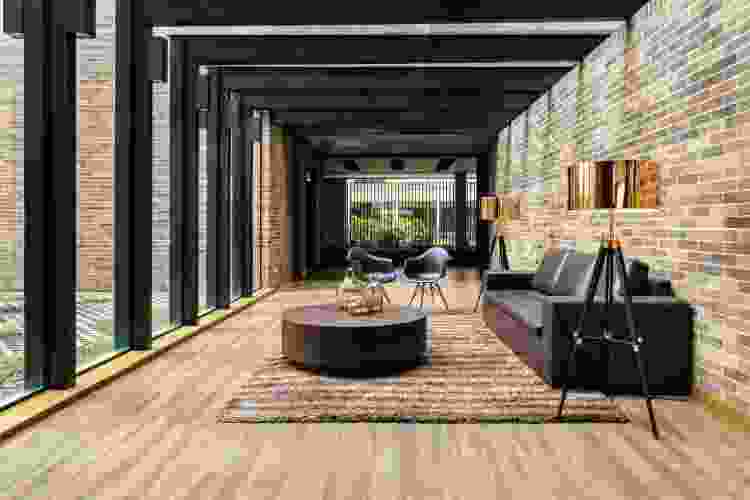
Mid-century modern décor and design have proven to be lasting. The timeless look of clean lines and nature-infused designs fi into today’s interior design trends as well as they did in the decades before.
Mid-century modern interior design began to come back into style during the 1990s and has continued to grow in popularity since. Many people still enjoy the mid-century modern ideas of communal spaces and incorporating nature.
Even if a home is not mid-century style, you can still see these influences. Many modern and contemporary homes feature open floor-plan living spaces and large windows and doors that blur the lines between nature and home.
Mid-century furniture is another legacy of the original design. Many people seek out original pieces in thrift stores or antique shops to adorn their homes. Contemporary furniture companies make pieces that mimic original mid-century designs.
Earthy yellows, greens, reds and browns are another way that mid-century modern design has created a legacy in contemporary design. Incorporating these colors into the design through the walls, kitchen cabinets and furniture color is a great way to bring mid-century aesthetics to your home. You can learn how to paint kitchen cabinets so they look professionally done.
Mid-Century Modern Architecture
Features of Mid-Century Modern Architecture
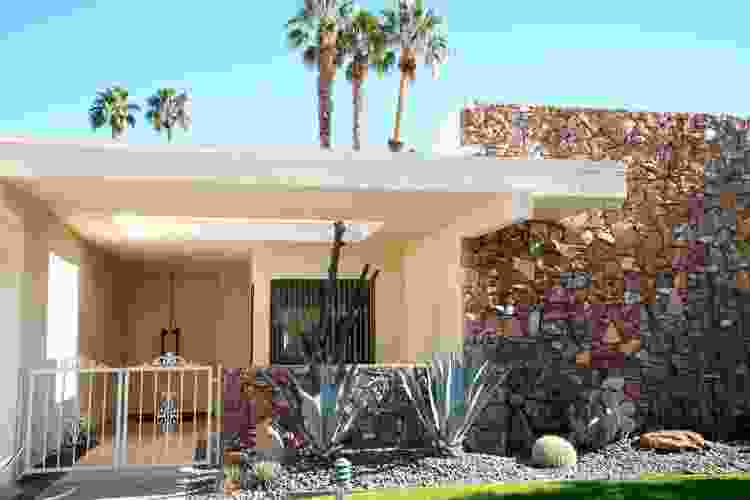
So, what is mid-century design when it comes to the architecture of a home? When mid-century architects were designing these spaces, they incorporated open floor plans and natural light through floor-to-ceiling windows. Sliding glass doors and skylights that allowed the outside to come in were also common features.
Mid-century modern architecture also featured varied elevation. Many homes of this time were one-story ranches with different spaces being at different elevations. Split-level homes were also commonly built. For more interior design ideas for home, explore how to incorporate mid-century elements into your space.
Outside, you’ll also see flat or low-pitched roofs and clean lines that form interesting geometric shapes. Natural elements are also worked into the architecture of a home.
Significant Examples of Mid-Century Modern Design
1. Eames House

Located in Los Angeles, California, the Eames House is a landmark built by architects Ray and Charles Eames, who are also known for creating the Eames chair. It has a sleek design characteristic of the mid-century modern style while also being comfortable and functional. The structure of the home is made of two rectangular boxes made of glass and steel, allowing the lush greenery to be part of the home.
2. The Miller House and Garden
Built by Eero Saarinen, the Miller House and Garden features a famous mid-century interior design. The most famous feature of this interior is the sunken conversation pit.
The change in elevation is often used in mid-century modern interior design and this feature creates a social space. Throughout the home, you’ll also find mid-century modern furniture like sleek sofas and a built-in storage wall that spotlights the clean lines of the design style.
3. The Glass House
Built by Philip Johnson in 1949, the Glass House is located in New Canaan, Connecticut. As the name suggests, the house features multiple floor-to-ceiling panes that bring the outside in, allowing views of the stunning landscape around the home.
The statement of the home is blurring the boundaries of nature and building.
4. Marcel Breuer House II House
This home in New Canaan, Connecticut, was built in 1951. A mix of concrete and glass, this home exemplified many mid-century modern ideas. Like most mid-century homes, nature and landscaping are integrated in the home’s design. Full walls of glass create living spaces in harmony with nature.
5. Kaufman House
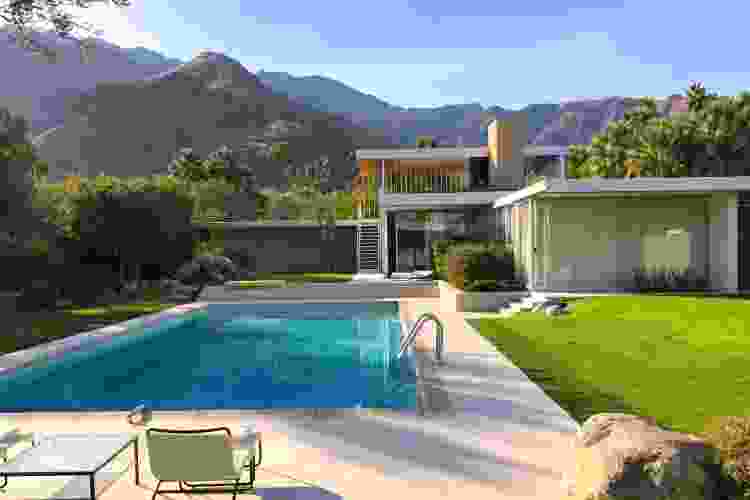
This mid-century modern house shows how interior and exterior spaces blend together. The Kaufman House was built in 1946 by Richard Neutra. It has a butterfly roof, a V-shaped roof that creates its iconic geometric design. Along with floor-to-ceiling glass walls that overlook the pool and the desert landscape.
Mid-Century Modern FAQs
What Is Mid-Century Modern Art Called?
The mid-century era was a time of innovation not only in home design and interior design but also in the arts. Many art movements rose to popularity.
Pop Art, exemplified by Andy Warhol, was among the popular art styles. As was Jackson Pollock and the Abstract Expressionist movement. Reproductions of some of these art movement’s most famous works make great home decor gifts for anyone who loves mid-century modern style.
Is Frank Lloyd Wright Considered Mid-Century Modern?
Frank Lloyd Wright is one of the most well-known architects and many of his works are quintessential of the mid-century modern style. However, the vast majority proceed what is considered the mid-century modern era.
His philosophy included organic architecture, where he sought to have nature blend together with his buildings. Wright also used features like open floor plans, large windows and earthy colors in many of his builds. Frank Lloyd Wright is considered the father of American modern architecture and laid the foundation for mid-century modern style.
From clean lines to natural materials, it’s not hard to understand why the mid-century modern aesthetic has remained popular for decades. Simple and minimalistic, timeless and elegant, mid-century design has a way of creating a stylish design in any home.
This is a beloved style that is sure to be a favorite for professional designers and those looking to decorate their spaces for years to come. This introduction to mid-century design is the perfect way to learn about the style before diving into designing your home.
To learn even more, check out other experiences happening on Classpop!

